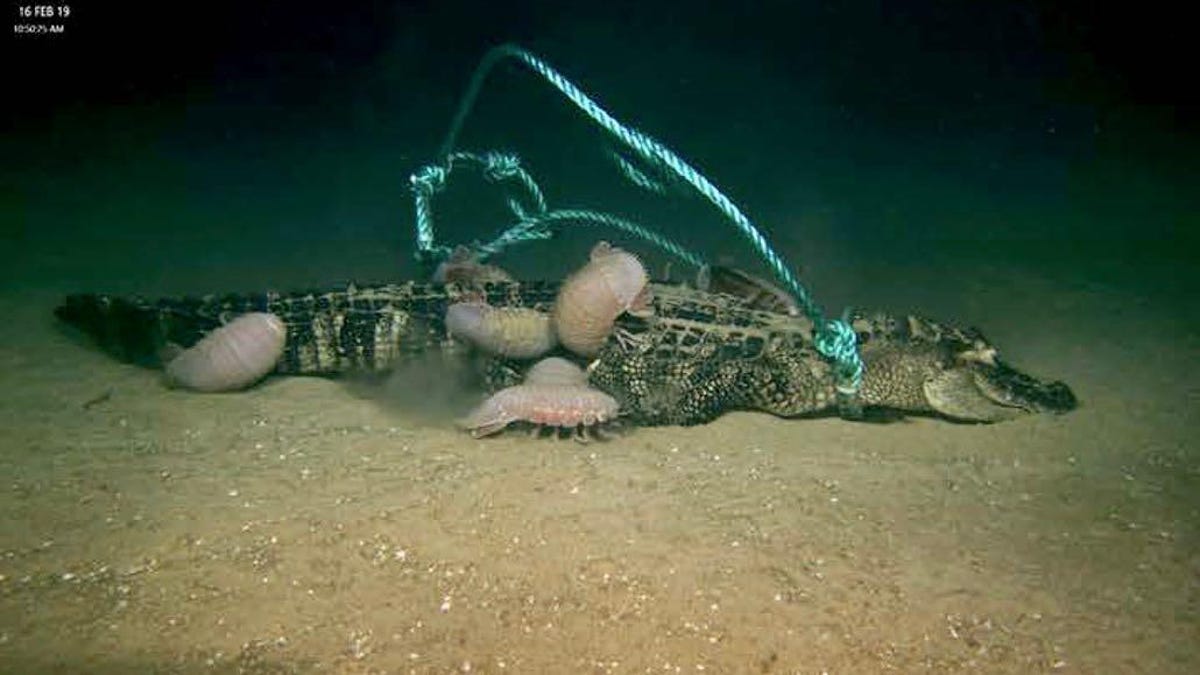Dead alligators dropped deep into the sea lead to a surprising find
Say "bone appétit" to a new skeleton-eating worm species.

Scientists discovered how hungry deep-sea creatures can be when offered a free alligator meal.
Alligators don't typically swim, or die, in the ocean. But researchers dropped three of them, dead ones, underwater to see how deep-sea creatures would react to finding a new and unusual food source.
The dead-alligator experiment was aimed at better understanding underwater food systems. Edibles like phytoplankton and other plant life don't exist on the deep-sea floor, so dwellers down there must sustain themselves by eating "marine snow" -- animal waste, scraps of decaying creatures and other organic debris that drifts from above.
Because alligators sometimes find themselves in ocean waters, searching for new food sources or flushed there by a hurricane, the scientists wanted to see if deep-sea creatures would nibble on the dead gators, or ignore them. The researchers, Craig McClain and Clifton Nunnally from Louisiana Universities Marine Consortium (Lumcon), share the surprising results of their experiment in a newly published study in the open-access science journal PLOS One.
The scientists placed three dead gators 6,600 feet down in the Gulf of Mexico and made their biggest find when they came back to their last dead alligator 51 days later. It was eaten completely down to its skeleton, except for a mysterious brown fuzz left on the bones.
Scientists found brown fuzz on one of the alligator skeletons happens to be bone-eating worms.
DNA studies of the brown fuzz revealed it was a newly discovered species of bone-eating worm from the Osedax genus. This is the first time any Osedax species have been spotted in the Gulf of Mexico, the researchers say.
"We confirmed it as a new species through comparing the DNA of the animals that we collected to the DNA of known Osedax species," River Dixon told Gizmodo. (Dixon is a Ph.D. Fellow in the McClain Lab at the University of Louisiana-Lafayette and a co-author of the new study.) "We found that the DNA was different enough to qualify our samples as a new species."
The other two dead alligators offered up some interesting findings too. One was devoured in less than 24 hours by giant isopods, which are known for going without food for years.
The scientists found that another one of their alligator carcasses went missing altogether. On further investigation, the scientists discovered drag marks where they'd left the gator.
"Whatever did that had to be huge. The carcass and weight combined to be over 36 kilograms (80 pounds), and its shape and length made it quite unwieldy," Dixon told Gizmodo. "With some calculations we were able to figure out that the bite strength needed to cut cleanly through our rope was consistent with that of a large shark."

